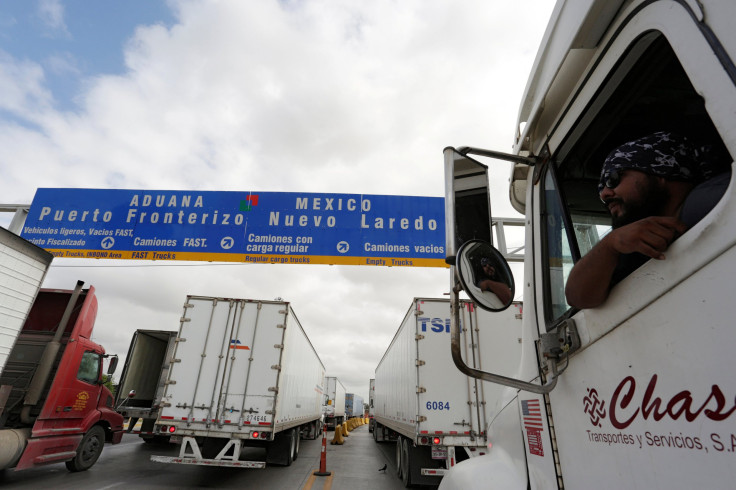What Is NAFTA, The Trade Deal Donald Trump Wants To Renegotiate? Facts About North American Free Trade Agreement

U.S. President Donald Trump said Sunday he would soon renegotiate the North American Free Trade Agreement (NAFTA) with Canadian Prime Minister Justin Trudeau and Mexican President Enrique Peña Nieto.
Trump said during a swearing-in ceremony at the White House: "We're going to start some negotiations having to do with NAFTA ."
"Mexico has been terrific. The president has been really very amazing. I think we are going to have a very good result for Mexico, for the United States, for everybody involved," he reportedly added.
But what exactly is this trade treaty and why is it contentious?
In 1994, NAFTA came into force between the U.S., Canada and Mexico when Bill Clinton was president. By eliminating most tariff and non-tariff barriers to trade and investment between these three countries, the agreement created one of the world’s largest free trade zones. Small businesses were meant to gain from this pact as the costs of products would be lowered to increase buying and selling abroad, resulting in the reduction of bureaucracy of larger businesses.
NAFTA - Chronology of Events
- June 10, 1990: U.S., Canada, and Mexico agree to have a free trade agreement
- Feb. 5, 1991: Negotiations on NAFTA begin
- Dec. 17, 1992: The U.S., Canadian and Mexican leaders sign NAFTA
- Aug. 1993: Labor- and environment-related additional side agreements are also negotiated
- Jan. 1, 1994: NAFTA comes into force
The agreement’s provisions are looked after by a number of institutions that ensure its proper implementation:
- A Free Trade Commission consisting of ministerial representatives from NAFTA partners oversees the work of NAFTA committees, working groups and other subsidiary bodies, and also ensures proper implementation of the agreement and resolve disputes.
- NAFTA coordinators are designated by each country that ensures proper management and implementation on a daily basis.
- NAFTA Secretariat is made up of a “national section” from each member country and is responsible for resolving disputes regarding the agreement and also maintains a tri-national website containing up-to-date information on past and current disputes.
- The commissions for labor cooperation and environmental cooperation was created to promote cooperation on labor issues among members and the effective enforcement of domestic labor laws, and to deal with environmental issues, challenges and opportunities concerning the member countries.
However, its efficacy is extensively debated in the U.S.
Some critics have blamed NAFTA for decimating the manufacturing sector and leading to significant job losses in the country, factors that are seen as contributing to support for Trump when he first started slamming the deal.
However, a report published by Michigan-based Center for Automotive Research earlier this month said: "Any move by the United States to withdraw from NAFTA or to otherwise restrict automotive vehicle, parts and components trade within North America will result in higher costs to producers, lower returns for investors, fewer choices for consumers and a less competitive U.S. automotive and supplier industry."
The Congressional Research Service, which provides independent analysis, reportedly said in 2015: "In reality, NAFTA did not cause the huge job losses feared by the critics or the large economic gains predicted by supporters," adding: "The net overall effect of NAFTA on the U.S. economy appears to have been relatively modest, primarily because trade with Canada and Mexico accounts for a small percentage of U.S. GDP [gross domestic product]."
© Copyright IBTimes 2024. All rights reserved.












